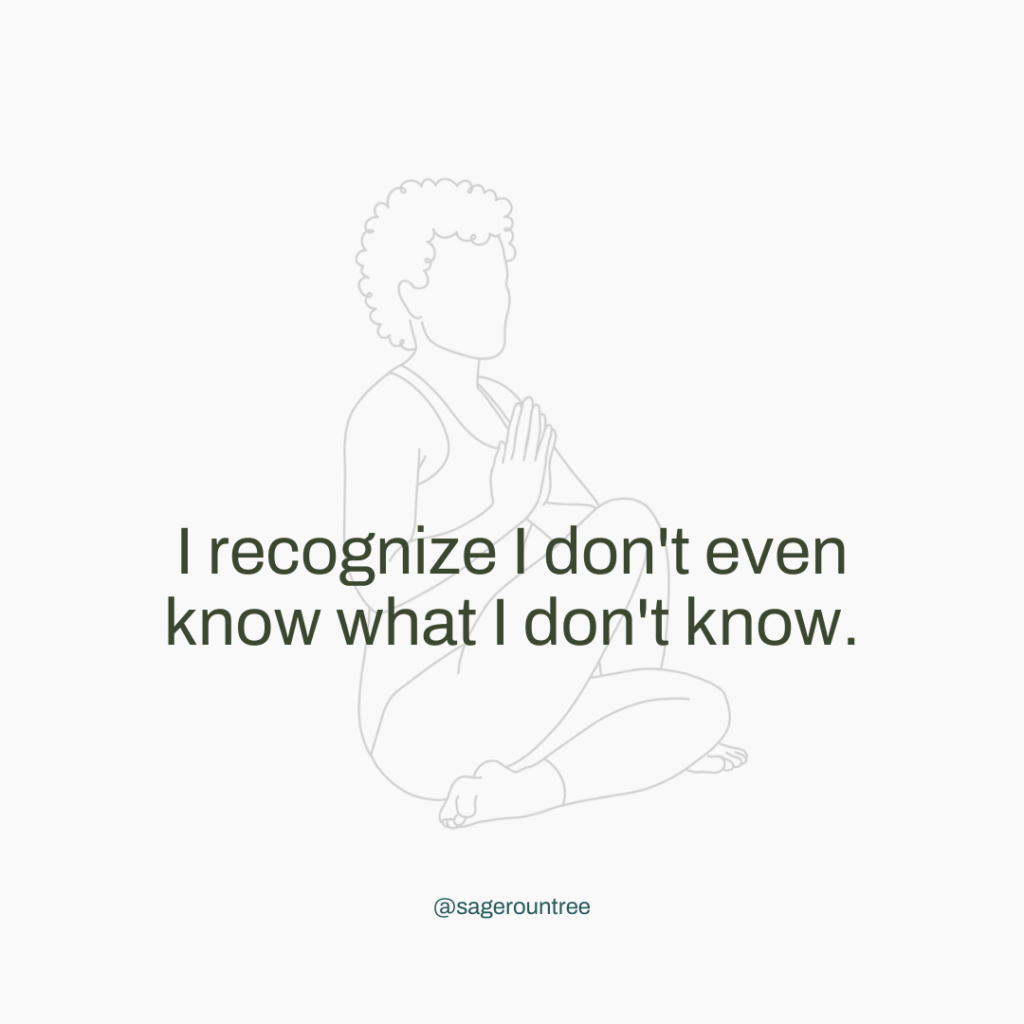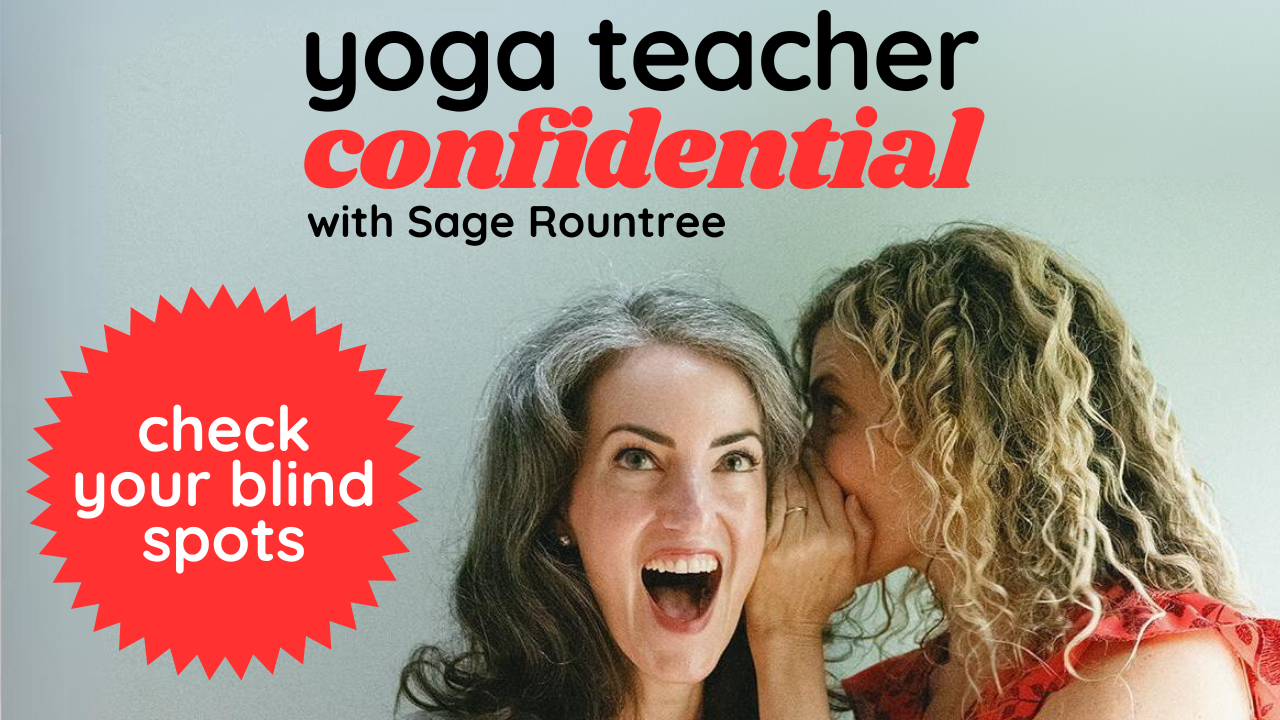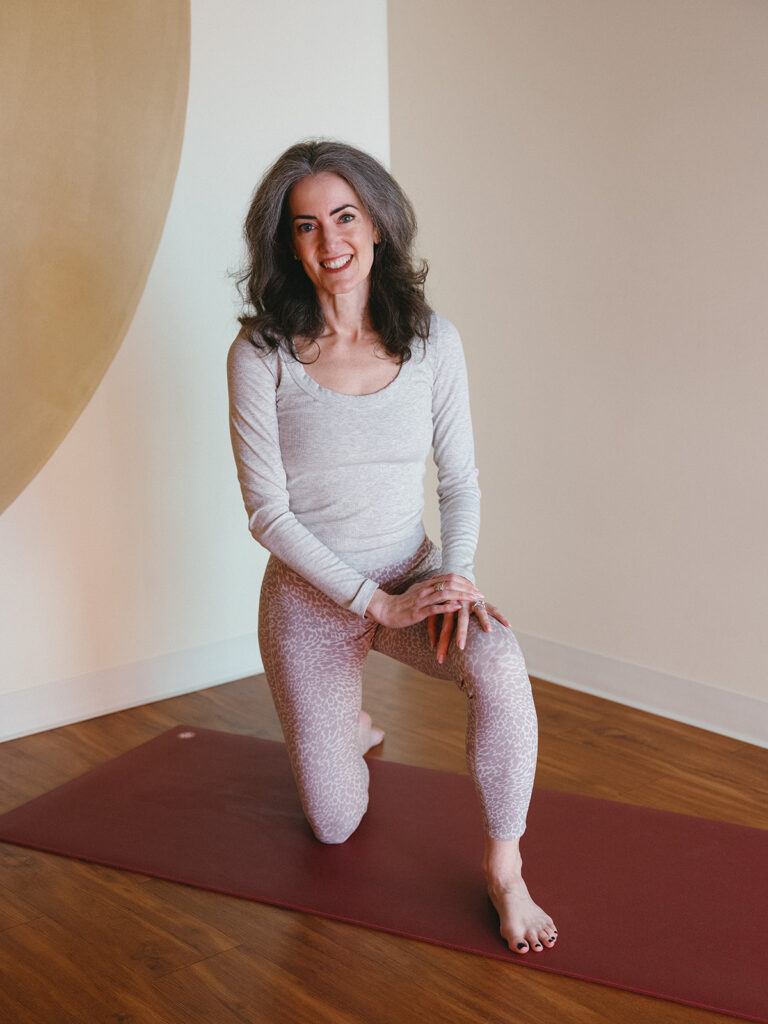Becoming a better yoga teacher is about more than mastering poses or memorizing sequences. It’s about knowing how to connect with your students, guiding them toward their own growth, and recognizing your own blind spots as a teacher. One of the most surprising things I’ve learned over 20+ years of teaching is that the very strengths that make us good at yoga can also hold us back as teachers.
your strengths can become blind spots
As yoga teachers, we’re often drawn to the practice because certain aspects of it came naturally to us. Maybe you have natural flexibility, a strong sense of balance, or an affinity for mindfulness. Those strengths might have made you fall in love with yoga, but they could also make it harder for you to teach students who don’t share the same abilities. The things that came easily to you might be the very things your students struggle with, and that can create a disconnect.
If you’ve never struggled with flexibility, it’s harder to understand what it feels like to be stiff and uncomfortable in a pose. If mindfulness practices have always clicked for you, it may be difficult to empathize with a student who feels scattered and finds it hard to settle their mind. If you were born with certain body parts that half the population doesn’t have, you will not know how yoga poses might affect those parts, and how to cue for those who do have them.
The key to becoming a better teacher is recognizing these blind spots and learning how to bridge the gap.
You’re the Best Teacher for the Student You Once Were
One way to improve your teaching is to reflect on the challenges you’ve faced in your own practice. Think back to the things you struggled with—whether it was understanding alignment, managing discomfort, or figuring out how to quiet your mind. You are best equipped to teach students who are facing those same challenges because you’ve been through it yourself.
You know what it feels like to struggle in a pose or feel unsure about a new practice. That lived experience helps you break things down and offer guidance in a way that someone who never faced those challenges simply can’t.
how to recognize your teaching blind spots
To get better as a yoga teacher, you need to identify and address your teaching blind spots. Here are a few strategies that can help:
- Listen to Your Students
Your students are your best teachers. Pay attention to the questions they ask, the cues that seem to work for them, and the moments when they struggle. When a student doesn’t seem to understand something that you find easy, that’s a clue to one of your blind spots. - Use Your Eyes and Ears
Watch your students closely. Are they grimacing in a pose? Are they looking around the room confused? If so, it may mean your cues need to be clearer or more precise. Listening to your students’ feedback, both verbal and non-verbal, is key to improving your teaching. - Ask for Feedback
Don’t be afraid to ask your students what worked for them and what didn’t. This can be as simple as a check-in after class or a formal feedback system. Hearing directly from your students can help you spot areas for improvement that you might otherwise miss.
balancing teaching strengths and weaknesses
Getting better as a yoga teacher means acknowledging your strengths and using them effectively, while also working to improve your weaknesses. Maybe you’re naturally flexible and therefore struggle with teaching beginners how to ease into poses. Or perhaps you excel at creating a calm, mindful environment but need to find ways to teach meditation to folks with active minds.
Remember, your weaknesses aren’t obstacles—they’re opportunities for growth. As you become more aware of your blind spots, you’ll be able to serve a wider range of students and guide them toward deeper connection and understanding in their practice.
turning weaknesses into strengths
Here’s the flip side: The very things that challenge you in your personal practice might become your greatest strengths as a teacher. If you’ve faced a specific challenge—whether it’s a physical limitation, an injury, or difficulty with certain aspects of yoga—that experience gives you valuable insight. You know firsthand what it feels like to struggle, and that makes you more empathetic, more patient, and more creative in finding ways to support your students.
For example, if you’ve had a knee replacement, you’ll have a better understanding of how to modify poses and offer alternatives for students with similar challenges. If you’ve struggled with staying present in meditation, you’ll know how to offer guidance to students who find mindfulness difficult.
keep growing as a teacher
Becoming a better yoga teacher is the work of a lifetime. It requires a commitment to ongoing growth, learning, and continuing education. This means constantly working to expand your own practice, seeking out new knowledge, and staying open to feedback. Remember that your students are not just learning from you—you’re learning from them, too.
As you continue to grow as a teacher, you’ll deepen your ability to connect with your students, help them navigate their own challenges, and guide them toward a richer and more fulfilling practice.
an affirmation
I recognize I don’t even know what I don’t know.

The more you understand what you don’t know, the more you’ll grow as a teacher. And the more you grow, the better you’ll be able to serve your students.
hear more about this
Listen to S1E5 of Yoga Teacher Confidential, where I dive deeper into these topics.


